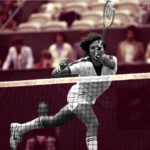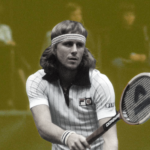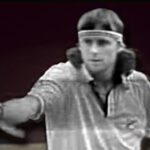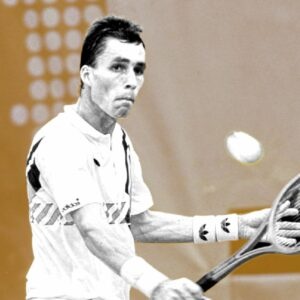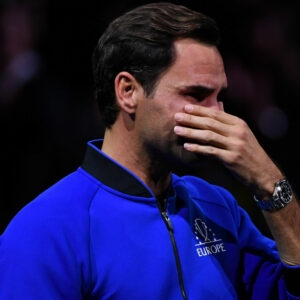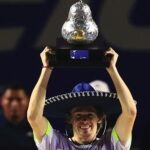January 8, 1978: When the Masters Cup final between Jimmy Connors and Bjorn Borg sparked a No 1 debate
On this day in 1978, Jimmy Connors defeated Bjorn Borg in three sets to win the 1977 Masters Cup and spark a debate about who was the world’s best player
 Jimmy Connors, On this day 8.01.2021
Image Credit: Panoramic/ Tennis Majors
Jimmy Connors, On this day 8.01.2021
Image Credit: Panoramic/ Tennis Majors
What exactly happened on that day?
On this day, January 8, 1978, Jimmy Connors defeated Bjorn Borg in the final of the 1977 Masters Cup at the Madison Square Garden in New York (6-4, 1-6, 6-4). With this win, the American, who was technically the ATP year-end No 1, re-opened the debate about the label of world No 1.
Although Connors had not claimed a Grand Slam title in 1977, he did defeat both Borg (the Wimbledon champion) and Guillermo Vilas (who had triumphed at Roland-Garros and at the US Open). “Who’s No 1? You decide,” said the Swedish legend to the journalists.
The players involved: Jimmy Connors and Bjorn Borg
- Jimmy Connors: The Aggressive Champion from the United States
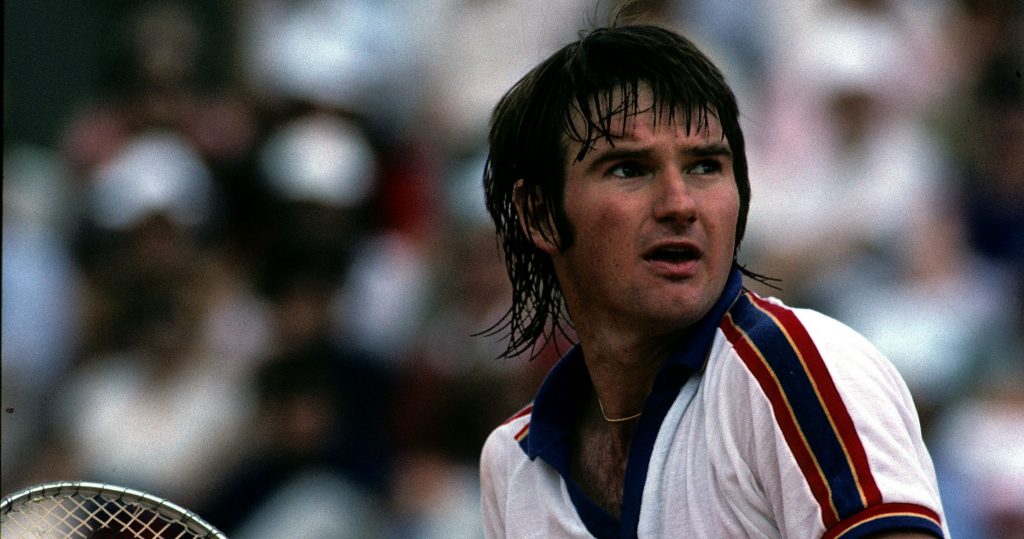
Jimmy Connors, born in 1952 in Ilinois, United States, was one of the greatest tennis players of his time. Coached by his mother Gloria, Connors was one of the first few players to hit the ball flat and mainly from the baseline. Hitting the ball on the rise, his game would be very influential for future generations of tennis players. He was also known for his outrageous on-court behaviour in the well-mannered world of tennis. While his mum loudly cheered for him in the stands, screaming “Come on, Jimbo!”, he displayed an unusual amount of aggression, even in the way he motivated himself. He was sometimes vulgar – giving the finger to a linesman or putting his racket between his legs in a crude manner. His constant quarreling with officials made him infamous in a gentleman’s sport. “Jimbo” turned pro in 1972 and during his two first seasons as a professional player, Connors managed to win17 titles and to reach three Grand Slam quarter-finals.
In 1974, Connors decided to enter the Australian Open for the first time, a decision that proved to be wise as he claimed his first Grand Slam title in Melbourne, defeating Phil Dent in the final (7-6, 6-4, 4-6, 6-3). It was the start of his greatest season. By July, Connors had already won 10 tournaments, including Wimbledon, where he had outclassed the Australian legend Ken Rosewall (6-1, 6-1, 6-4) in one of the most one-sided finals in the tournament’s history. A few weeks later, he reached world No 1 for the first time. His season had only been clouded by his ban from Roland-Garros because of its participation in the World Tennis Tour, which led him and his manager to file a lawsuit against the ATP.
Connors put a cherry on top of that fantastic year by triumphing at the US Open, destroying Rosewall again in the final (6-1, 6-0, 6-1). In 1975, he remained the undisputed world No 1 but although he won nine titles, he failed to conquer another Grand Slam crown, finishing runner-up three times – defeated by John Newcombe in Australia (7-5, 3-6, 6-4, 7-6), then by Arthur Ashe at Wimbledon (6-1, 6-1, 5-7, 6-4) and eventually by Manuel Orantes at Forest Hills (6-4, 6-3, 6-3). Jimbo added a fourth Major crown to his list of achievements in 1976, defeating Borg in the US Open final (6-4, 3-6, 7-6, 6-4). In 1977, he finished runner-up at Wimbledon and the US Open but despite not winning any Grand Slam title, he still held the No 1 ranking.
- Bjorn Borg: The Ice Cool champion from Sweden
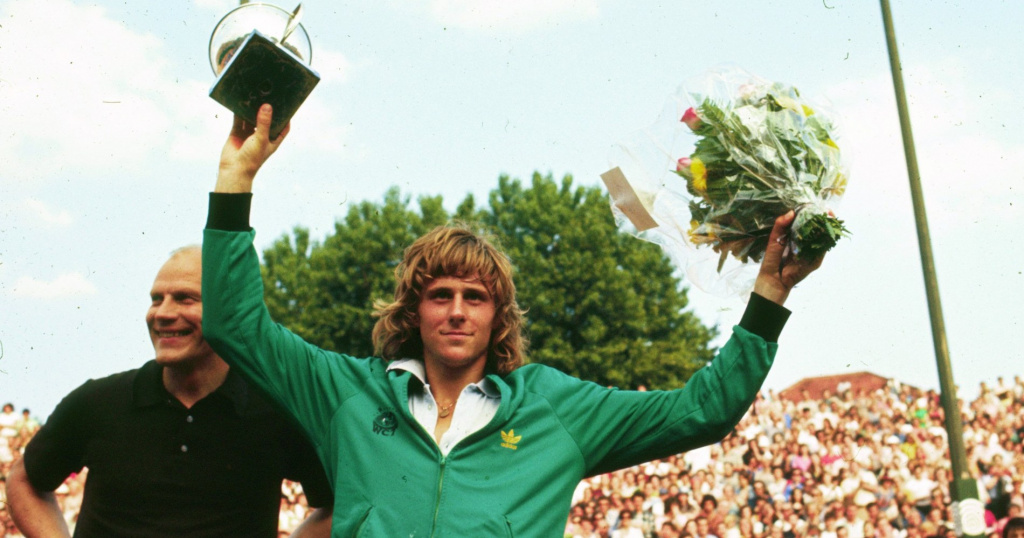
Bjorn Borg, born in 1956 in Sodertalje, Sweden, was the champion who changed the game of tennis forever. His unprecedented stardom and numerous successes were the main reason why tennis became such a popular sport in the 1970s. His game style, which involved a lot of topspin and a two-handed backhand, was revolutionary and would be copied all across the world. His nickname “Ice Borg” reflected his attitude on the court: Borg seemed to have his emotions under control at all times.
Borg started playing tennis as a nine year old. By the age of 15, he was already a member of the Swedish Davis Cup squad, and in his first appearance in the competition, he won his singles match against New Zealand’s Onny Parun. He turned pro the following year in 1973, before he had even turned 17, and soon reached the final in Monte-Carlo, where he was defeated by Ilie Nastase (6-4 6-1 6-2). His domination of the game started in 1974 when at the age of 18, he claimed his first Grand Slam at Roland-Garros beating Manuel Orantes in the final (2-6, 6-7, 6-0, 6-1, 6-1), becoming, at the time, the youngest-ever French Open champion.
Since the start of his career, only one player had managed to defeat Borg in Paris: Italy’s Adriano Panatta, who beat him in 1973 and 1976. Otherwise, the Swede remained undefeated in Paris where he had triumphed a second time in 1975, defeating Guillermo Vilas in the final (6-2, 6-3, 6-4). In 1977, Borg decided to play the World Team Tennis, a well-paying team competition held in the United States at spring, thus skipping the French Open. Since 1976, he had also proved himself invincible at Wimbledon, lifting the trophy in 1976 (outplaying Ilie Nastase, 6-4, 6-2, 9-7) and 1977 (defeating Jimmy Connors, 3-6, 6-2, 6-1, 5-7, 6-4).
As Borg had entered the Australian Open only once, in 1974, it was considered that the only major title he was still chasing was the US Open, where he had lost in the 1976 final to Jimmy Connors. Borg also remained undefeated in Davis Cup singles, having won all his 19 matches when playing under the Swedish flag.
The place: The world’s most famous arena, Madison Square Garden
Founded in 1970, the year-end Masters Cup was the final showdown between the eight best players in the world. Held in a different location every year at the start, the event settled at the Madison Square Garden in New York in 1977. In the “World’s Most Famous Arena”, the Masters Cup became more than just a tennis tournament, it became a spectacle. In this first edition, tickets were sold out well in advance, with more than 18,500 spectators packing the stands. The tournament director, Ray Benton, had moved the event to January in order to avoid competition with American football. Prior to the upcoming Super Bowl, the Tennis Masters Cup was the main sports event in the United States that week.
The facts: Connors’ fighting spirit too much for Borg
In 1977, although he held the ATP No 1 ranking, Jimmy Connors had not really been dominant, despite winning several titles, reaching two Grand Slam finals, and winning the WCT Finals. Two other players had dominated the scene: Bjorn Borg, who had triumphed at Wimbledon, and Guillermo Vilas, who had won both Roland-Garros and the US Open, accumulating 17 titles throughout the season.
At the time, the ATP and the ITF each had their own ranking, and they were not even using the same scoring system. While the ITF was simply adding points earned by the players in the Grand Prix tournaments, the ATP divided the points earned by the players by the number of ATP events attended. According to the ATP rankings, Connors was No 1, Vilas was No 2 and Borg was No 3. But on the ITF charts, Vilas was No 1, Borg No 2, and Connors No 3.
Borg beat me at Wimbledon. Vilas won Forest Hills. I won here. (…) Just don’t rank all three of us No. 1. That would be a cop‐out..
Jimmy Connors
In any case, as Barry Lorge wrote in The Washington Post: “What had become obvious throughout the 1977 season: Borg, Vilas and Connors inhabit a plateau, a shade above all the other fine players on the landscape.”
The year-end Masters Cup was a good opportunity to see who was actually the best. In the round-robin, Vilas defeated Connors (6-4, 3-6, 7-5), but the Argentine was heavily defeated by Borg in the semi-finals (6-3, 6-3).
In an exciting baseline battle between Connors and Borg, the more aggressive player finally prevailed. Borg adopted a defensive strategy, hoping that Connors would rush and make unforced errors, but the Swede was disappointed. The American managed to remain aggressive and patient at the same time but after he took the first set (6-4), Borg’s consistency seemed to wear Connors down. Soon, Jimbo lost the second set (6-1) and trailed 2-0 in the decider. Once again, the world No 1 demonstrated his fighting spirit and, raising his level, Connors played flawless to take the victory, 6-4.
“I don’t think you’ll see any better tennis from me”, Connors told the audience, as reported by The New York Times. “It’s certainly the best I can play. I had to play that way to beat Borg today. Let’s play it all over. Borg beat me at Wimbledon. Vilas won Forest Hills. I won here. (…) Just don’t rank all three of us No. 1. That would be a cop‐out.”
What next? Connors would hold the record for most weeks spent at the No 1 spot
In the following years, after a third US Open crown in 1978, Connors would struggle, failing to reach a Grand Slam final in 1979, 1980 and 1981. He would then return to the top, claiming three more major titles in 1982-1983, reclaiming the world No 1 spot for 17 weeks, setting a record of 268 weeks spent as world No 1 in his career.
This record would be beaten by only two weeks, in 1990 by Ivan Lendl (Lendl’s record itself would later be broken by Roger Federer and then Novak Djokovic, who holds the current record for most weeks at world No 1 in tennis).
Jimbo would remain a top 10 player until April 1989, at the age of 37. In 1991, at the age of 39, he would make a memorable run to the semi-finals at the US Open, where he was defeated by Jim Courier (6-3 6-3 6-2).
At the end of his long career, he would hold a record of 109 titles on the tour, a mark that has yet to be beaten. Although he would reappear from time to time thereafter, Jimmy Connors would retire at the end of 1992.
Borg would become world No 1 again only in March 1979, holding the spot for a total of 41 weeks before a new rival, John McEnroe, would emerge. Nevertheless, Borg would remain dominant until 1981, with a total of 109 weeks spent on top of the rankings. The constant attention and pressure would eventually lead him to burning out and quitting professional tennis in 1981 at the young age of 26, having already won 64 tournaments, including 11 Grand Slams and 2 Masters Cups.

